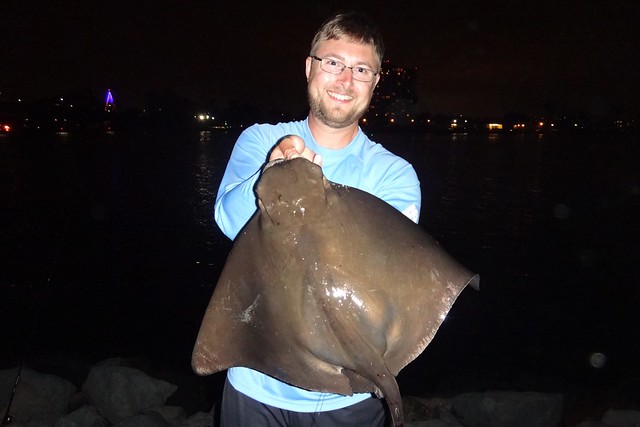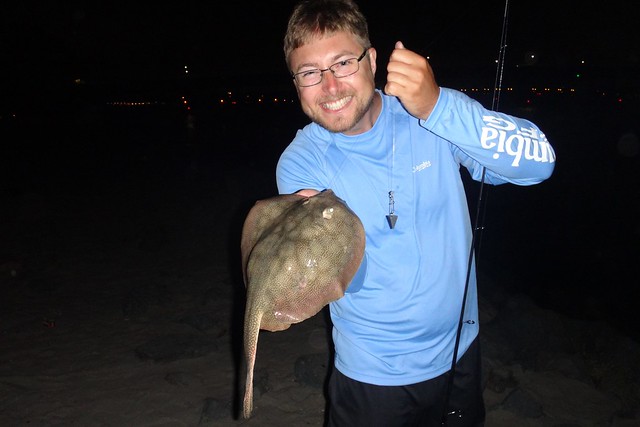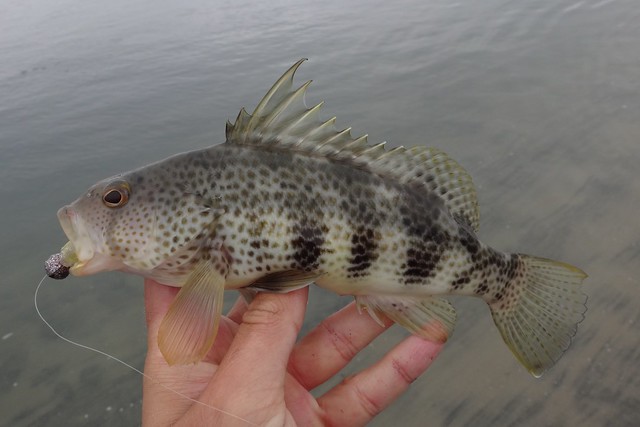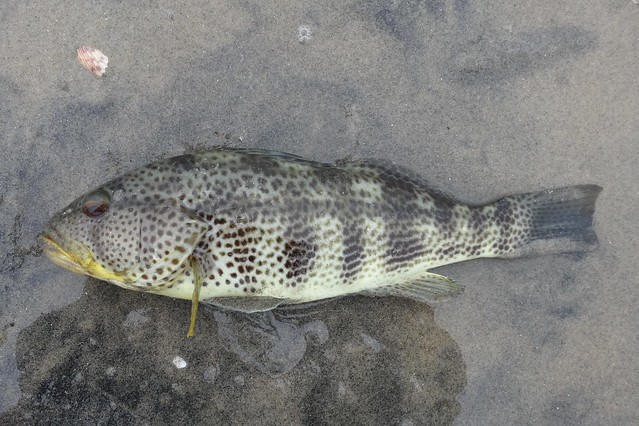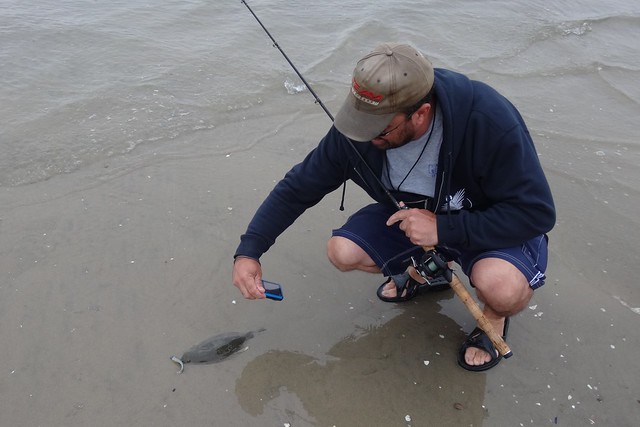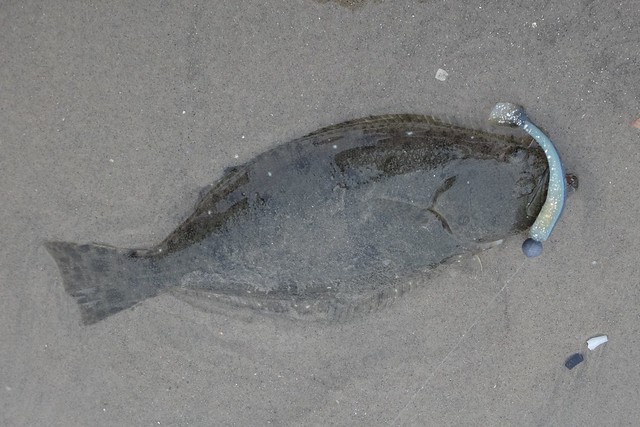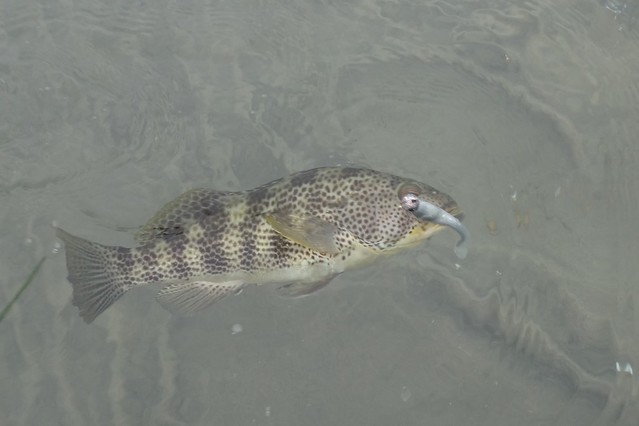We were well stocked with bait - boxes of frozen squid, a scoop of live sardines, a four gallon bucket of shark chum, and a big tub of pig's blood. In hindsight all we really needed was the squid, but we erred on the side of being over prepared. We hoped to use the last two items to attract pelagic sharks, but we only chummed a couple times, and I don't think we ever created a long enough slick to bring anything to us.
Before we headed out to the canyon we spent a little time dropping sabikis down to the bottom near the harbor entrance. Each species was new for my lifelist, which was pretty darn cool. My first catch was a Pacific jack mackerel.
Pacific Jack Mackerel (Trachurus symmetricus) - new hook & line species #341
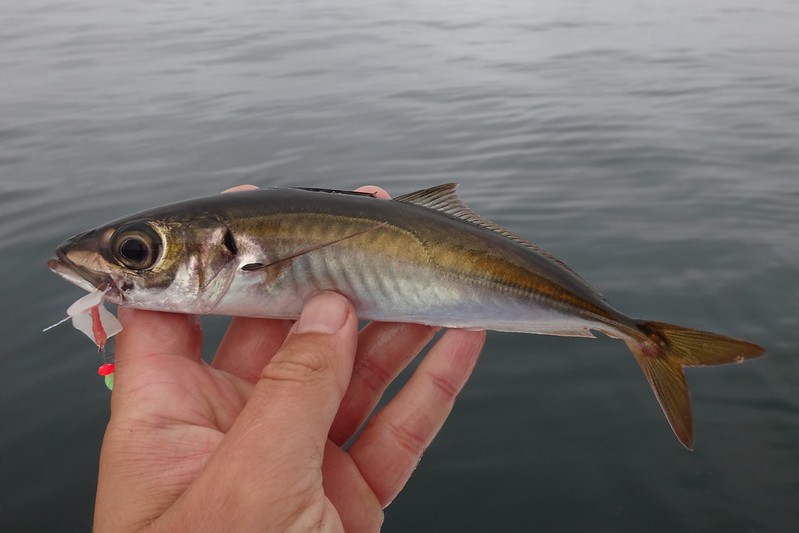
Eli had found some information about a spot that divers frequently visit to see sarcastic fringeheads. We each reeled one up at the same time!
Sarcastic Fringehead (Neoclinus blanchardi) - new hook & line species #342
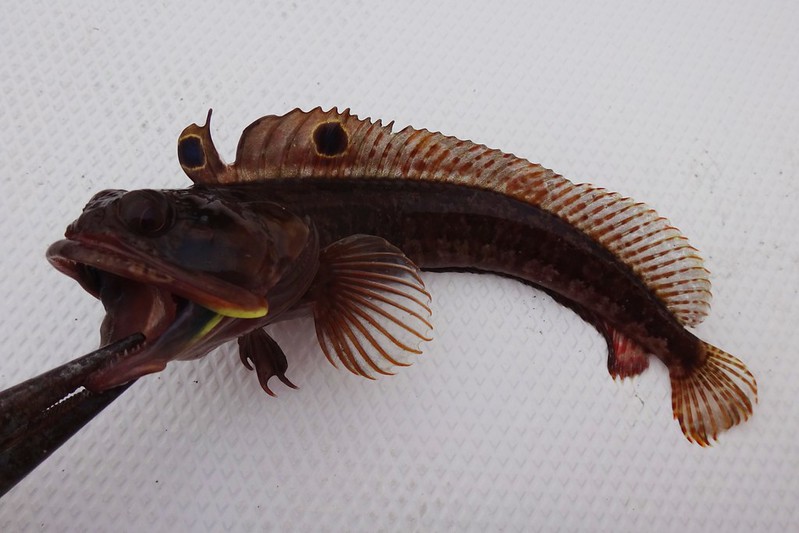
I don't think I've ever seen a small fish with so much attitude. He would sit upright with a look on his face that said, "I dare you to come closer!".
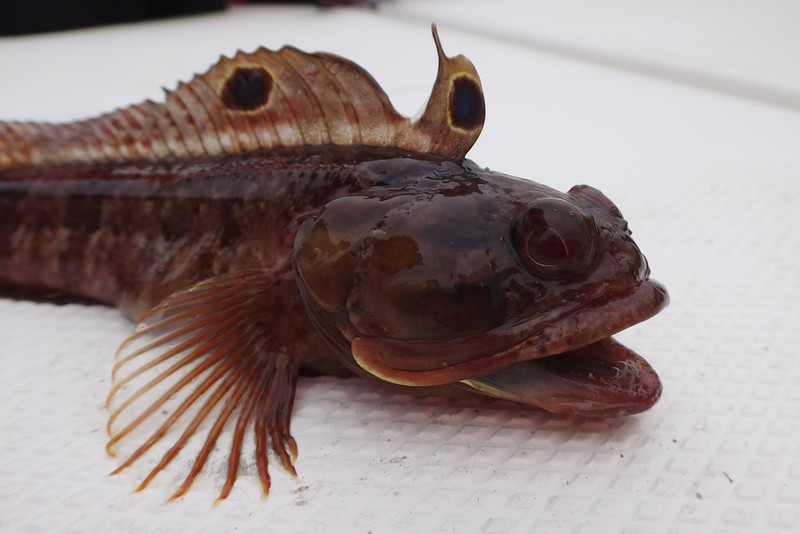
And if I moved the camera too close to his face, he got angry!

Next we got into some lizardfish as we drifted over a sandy area.
California Lizardfish (Synodus lucioceps) - new hook & line species #343

Despite having sharp teeth, they have really weak mouths.
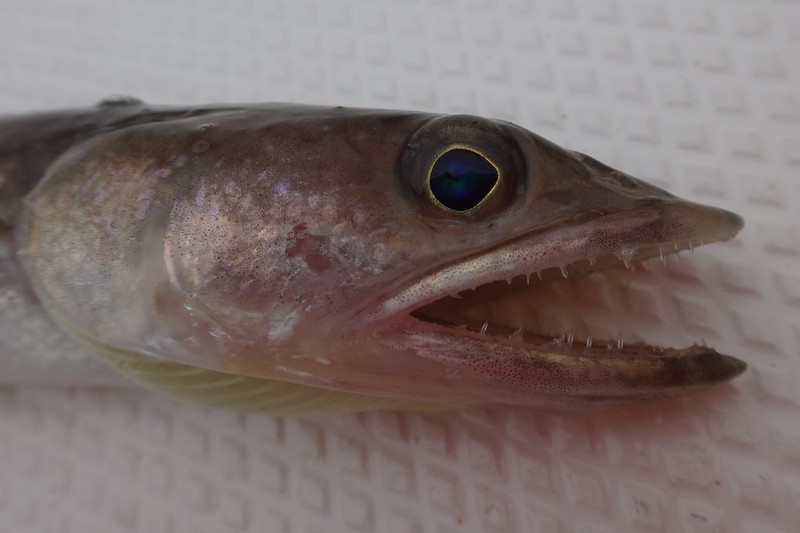
My fourth fish was a Pacific sanddab. The new lifers just kept coming!
Pacific Sanddab (Citharichthys sordidus) - new hook & line species #344
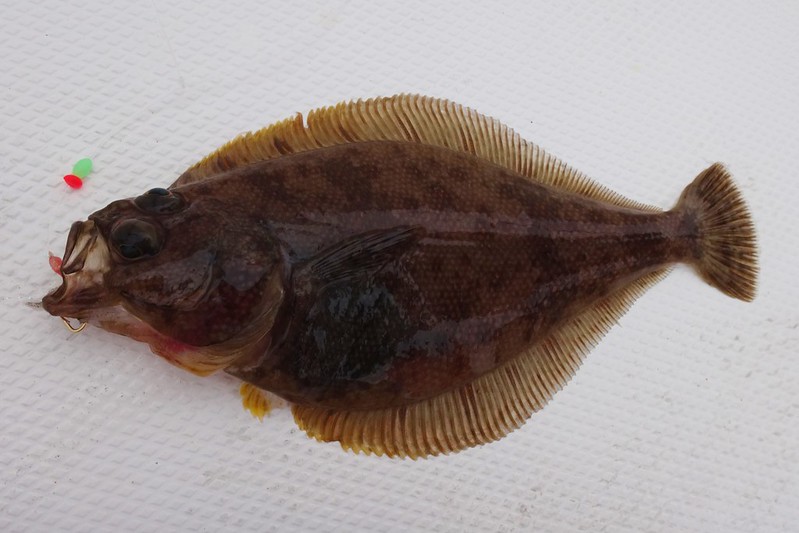
In the past I've used the cheapest sabikis I could buy online, usually a dollar apiece, but this time I picked out one that was a little higher quality. I think the brand was Ahi. It worked out really well, and the hooks were a good size for most of the fish we caught.

A little outside the harbor we got into some juvenile rockfish. I got a calico, and Eli caught some other ones, but I forgot what species they were.
Calico Rockfish (Sebastes dallii) - new hook & line species #345
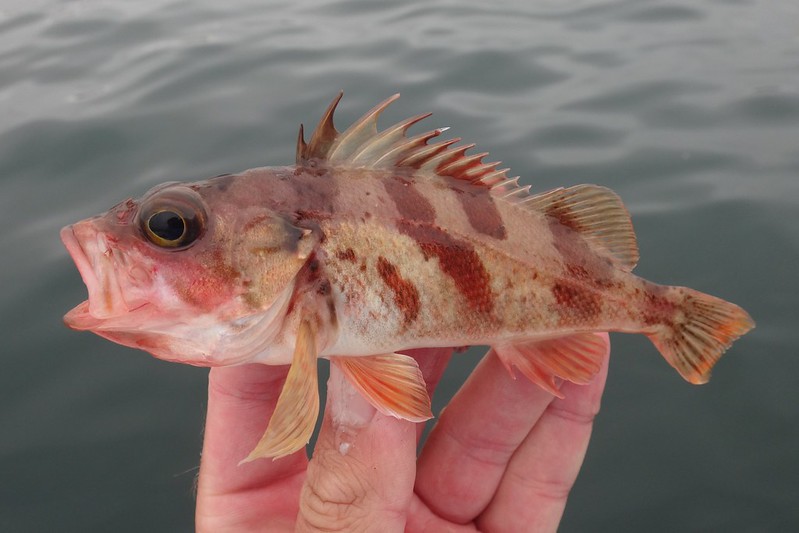
Each species had different patterns. This was my first time seeing rockfish in person, and I really enjoyed them.
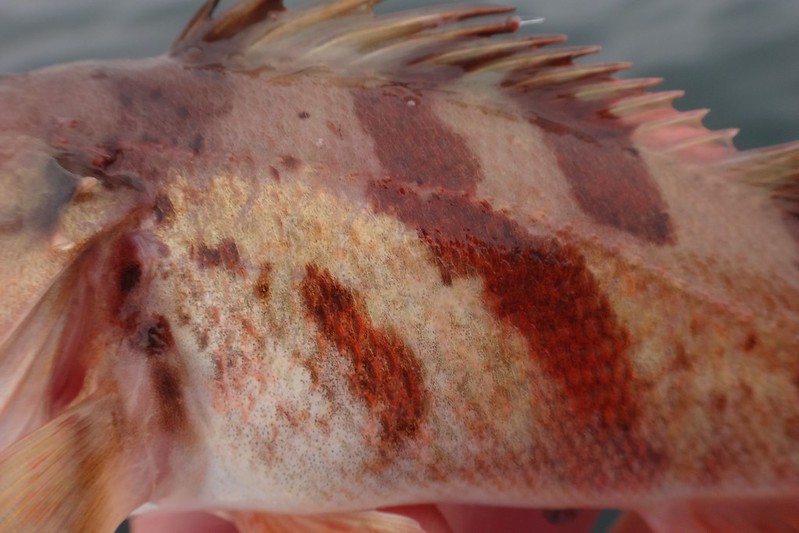
Finally we motored out to deeper water. We started in around 300 feet. Eli caught a few rockfish, and both of us caught plenty of sanddabs.

My deepest fish of the day ended up being a tiny sanddab from 480 feet of water. My hook size and bait were intended for bigger fish, but that didn't stop him from somehow fitting both inside his mouth.
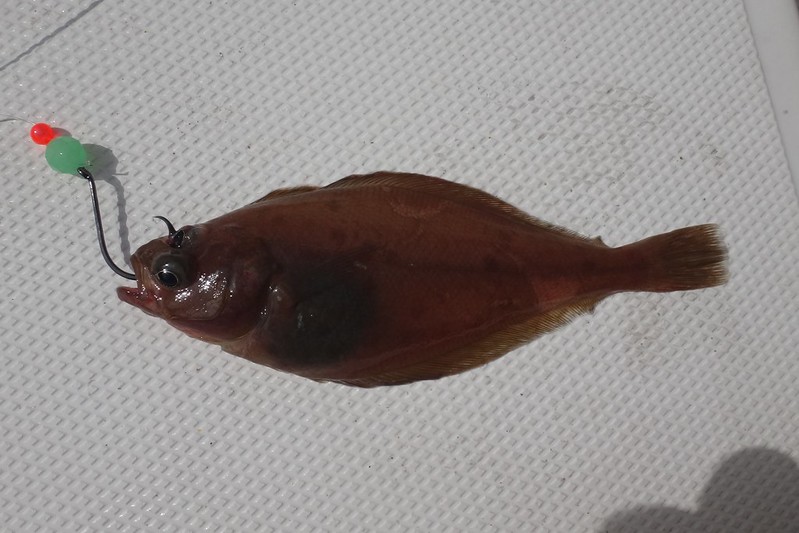
We did drops in 700, 900, 1000, and 1100 feet of water, but I didn't get any fish. Eli caught a couple sanddabs. I had upgraded to larger hooks, and I felt a few nibbles, but no hookups. Probably more sanddabs. We were using 2 lb cannonball sinkers, and we could feel them getting stuck in the mud on the bottom. It took some serious effort to get them unstuck! We didn't feel rocks on the bottom, and I think that's why we didn't find any fish other than sanddabs. It was disappointing, but we still had a great time and learned a lot.
In the afternoon we decided to quit trying in the super deep water and move in where we could see structure on the fish finder. In 250 feet of water I hooked up with something that could actually make the rod tip bounce a little bit. It turned out to be my second ever shark, a spiny dogfish!
North Pacific Spiny Dogfish (Squalus suckleyi) - new hook & line species #346
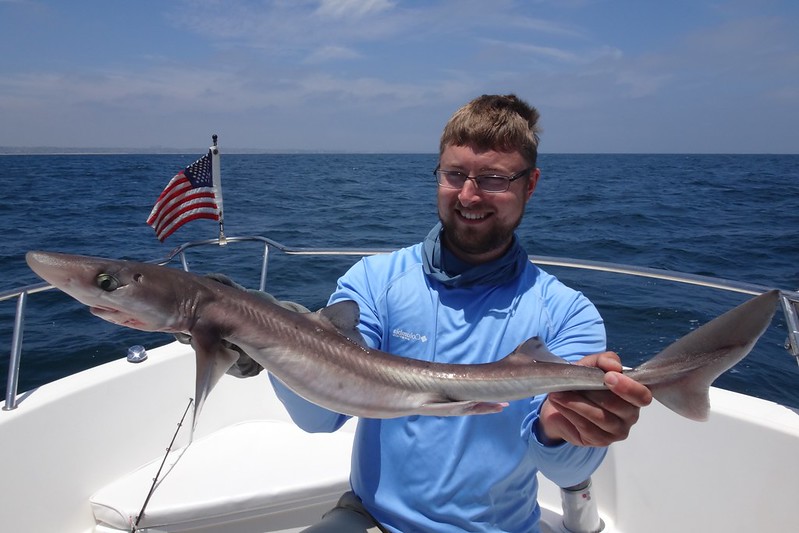
I was using an 8/0 circle hook, and even he was a little too small for it. I released him with a pretty big piercing on his chin. Hopefully he'll be alright.
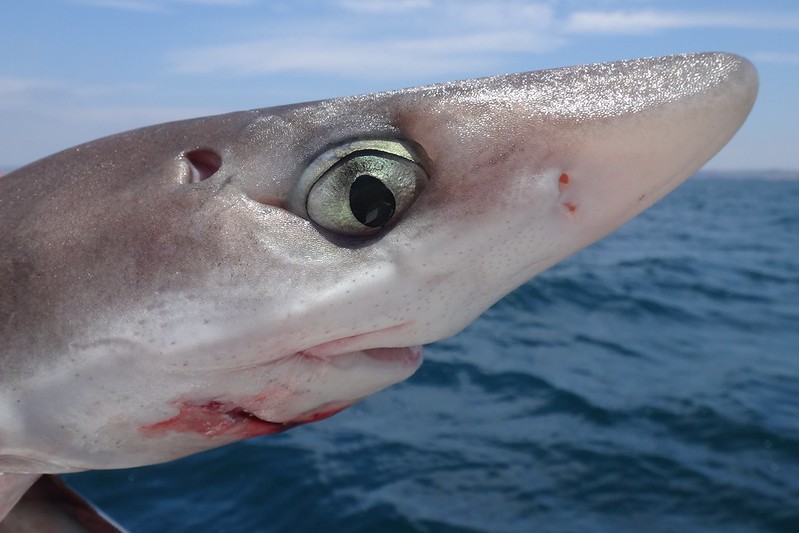
The sanddabs managed to find us no matter where we went. At one point I filled up my 4 hook homemade rig, and I turned to show Eli...
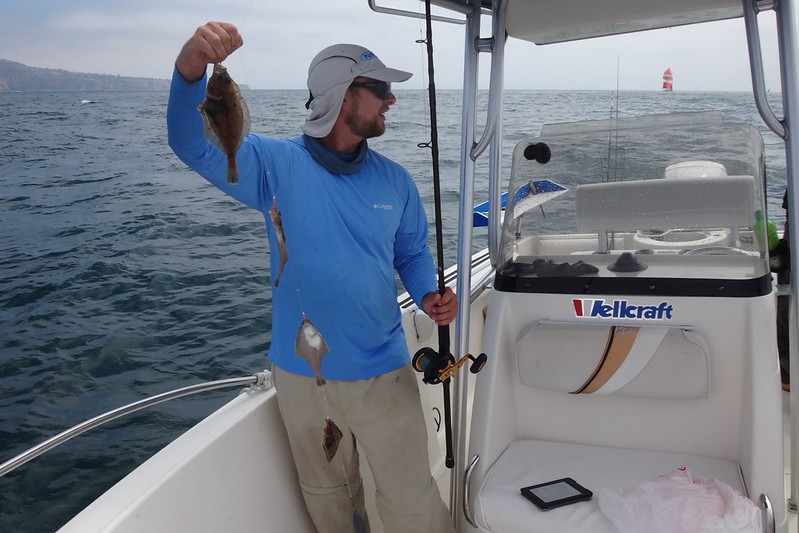
... and I looked over and saw that he had 6 of them on his 6 hook sabiki.
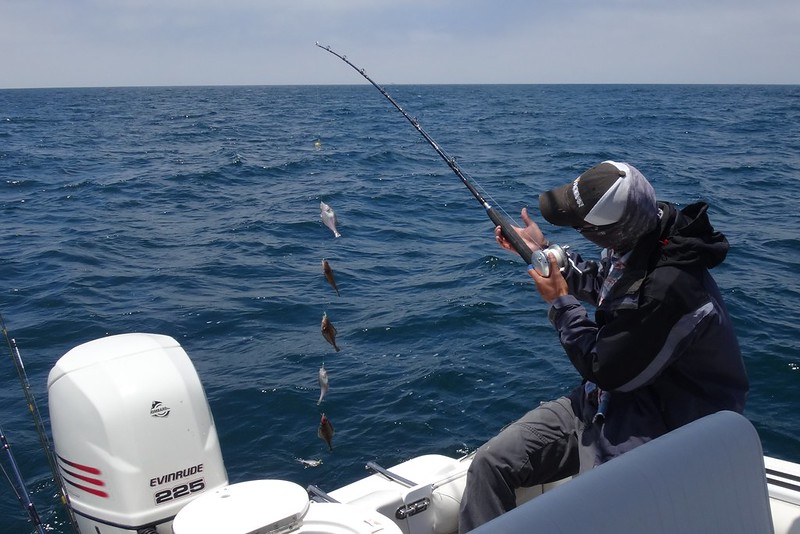
I switched back to the large hooks hoping to avoid the sanddabs, but they still managed to hook themselves. One of them felt awfully light coming up. I'm guessing a spiny dogfish around the same size as the one I caught earlier had a snack.

We were surprised when a mola mola showed up and hung around the boat for about a half hour. It stayed pretty close, and when we leaned over the edge of the baoat to look at it, it would turn its body so it could look back up at us. It was the highlight of the day!

I dunked my camera under water to get some shots as well. Most of them didn't turn out, which I expected, but a few turned out really well!
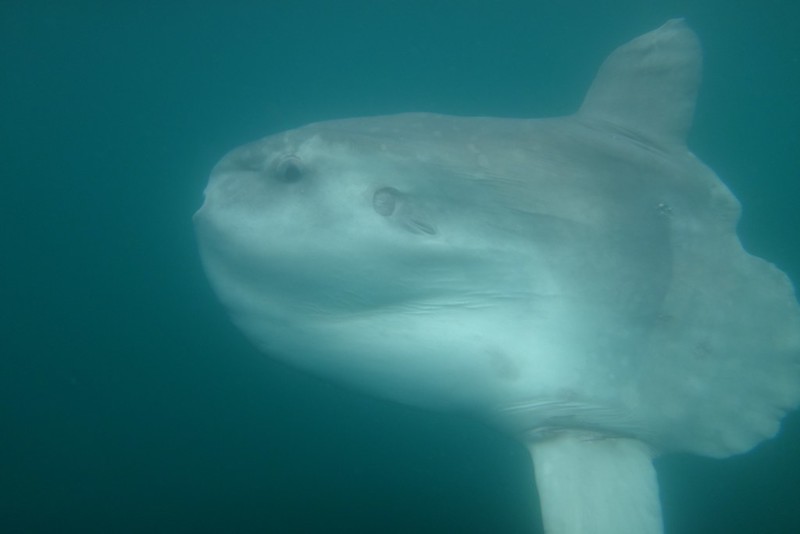
We finally had to head back to the harbor around 3:00 pm to refuel and wash the boat before returning it to it's owner.
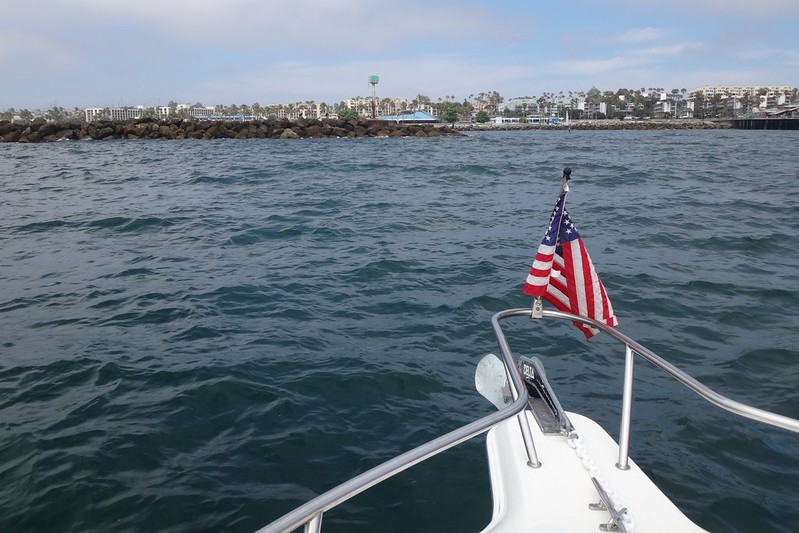
With our remaining minutes, we dropped sabikis back down at the harbor entrance to see if I could add a couple rockfish species to my list. It paid off, because I caught a copper rockfish.
Copper Rockfish (Sebastes caurinus) - new hook & line species #347
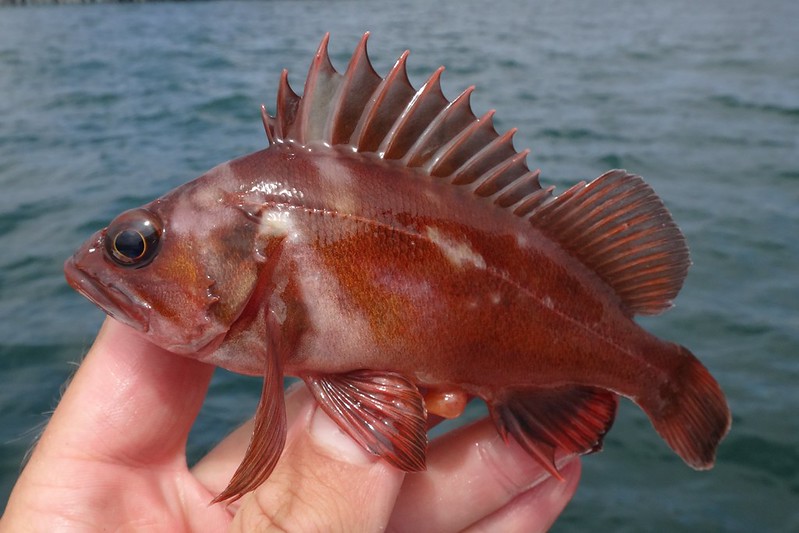
And then a bocaccio (or salmon grouper as the locals call them).
Bocaccio (Sebastes paucispinis) - new hook & line species #348
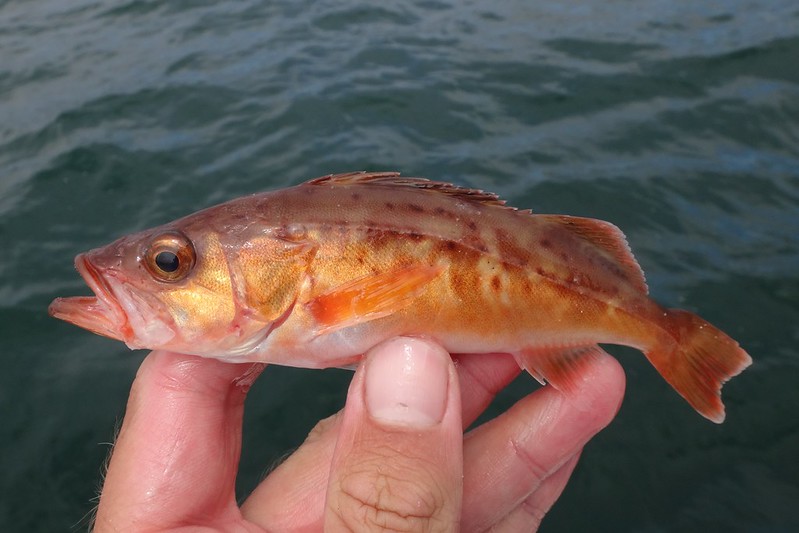
It was time to head back, so that was the end to our day. I ended up with 8 new lifers, and Eli ended up with 4, which is excellent for him considering how many California fish he already has.
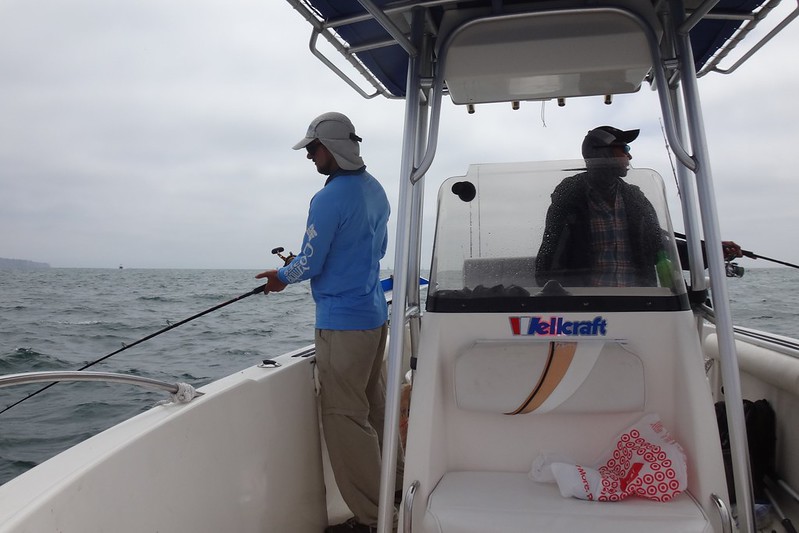
I should have taken some photos of the gear we were using, but I forgot. For under 100 feet I used 10 lb mono and 2 oz of weight on a Penn Fierce 4000 reel and a medium 4-piece Ugly Stik travel rod. Between 100 and 300 feet I used 65 lb braid and 1 lb of weight on a Saltist BG 40H star drag and a 6'8" 4-piece Penn Rampage travel rod. Over 300 feet I used 65 lb braid and 2 lbs of weight on a Penn Fathom 40 lever drag 2-speed and a 1-piece 50-100 lb Penn Rampage jigging rod. I did not use mono top shot with the braid, just tied the braid directly to the snap swivel and the top of the bottom rig. I used the strobe light whenever we were over 300 feet, but I can't say whether it helped or not. The bottom rigs were made with either 60 lb or 100 lb mono, and I used 25 lb mono for the length of line from the last 3-way swivel to the sinker. Fortunately we did not lose any lead the entire day!
